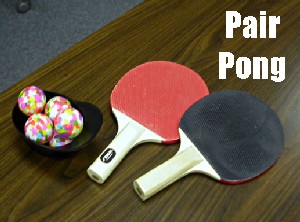Agile tells us to the do the simplest thing that could possibly work for the things that we need right now. Why do we do the simplest thing? The answer: Because it is cost effective, especially because the future is unsure. For example, when the business does have something similar, are we sure they’re not going to want it to do something more that will need more work done? Or perhaps the cost of making something “general” could be better spent on more immediate priorities, because if it never gets used, the cost of building (not to mention maintaining) the general infrastructure is wasted.
So what if your business tells you that they want something for now, but make it general, so if they want to do something like it (but not exactly like it) they can reuse the infrastructure to do it again? Even if the business or the analyst is driving this requirement, it reeks of having a bad smell, and is probably driven by a Fear of Waiting. To me this could mean one of several things:
- Release Cycles are not often enough – Waterfall projects typical schedule a release for anything between 3 months up to a year or more. If requirements do not get in, it is a very long time until they are revisited. Agile addresses this with the Release Often principle that emphasises more requirements prioritisation over requirements identification and freezing.
- Too many competing priorities – With smaller release cycles providing more restrictive timelines, the next issue is working out what can be fit into that release cycle. Businesses typically have many competing priorities, with waterfall models trying to fit all of those priorities in (leading to bigger release cycles). Agile attempts to get people to prioritise what is most important to them right now.
- Not Enough Bandwidth – The amount of business value that can be delivered is a function of the fixed time that can be available and the amount of work that can be produced by available resources. I am specific amount the amount of work produced instead of simple the number of people because it is not simply about the number of developers available (read the Mythical Man Month if you want to learn more). Typical waterfall methods rely on judgement (estimates that become promises) to give a guide as to how much can be provided. Agile provides better metrics in the form of a historical moving average of points (e.g. storycard points) per iteration that indicate a better guide as to what can be delivered.
So what can we do to alleviate this fear? Agile has many values and two key ones that spring to mind is around visibility and communication. Visibility is about making people aware of issues (in this case, a fear) and to try to work out what the real motivation is (especially if it is not a real business need). Communication is about making the process transparent and how it is (or can be helping if it is not) to alleviate those concerns.
 I’ve been a little bit quiet on the blogging front, both personal and work related (or at least it feels that way). The last few weeks have been busy, as I’ve been getting back into my normal routine (riding heaps!) coupled with the preparation of two major presentations. The first of these, intended for an audience internal to my company for this weekend, has had most of my attention for the better part of last month. The second, which had been the focus of this month, was for the
I’ve been a little bit quiet on the blogging front, both personal and work related (or at least it feels that way). The last few weeks have been busy, as I’ve been getting back into my normal routine (riding heaps!) coupled with the preparation of two major presentations. The first of these, intended for an audience internal to my company for this weekend, has had most of my attention for the better part of last month. The second, which had been the focus of this month, was for the